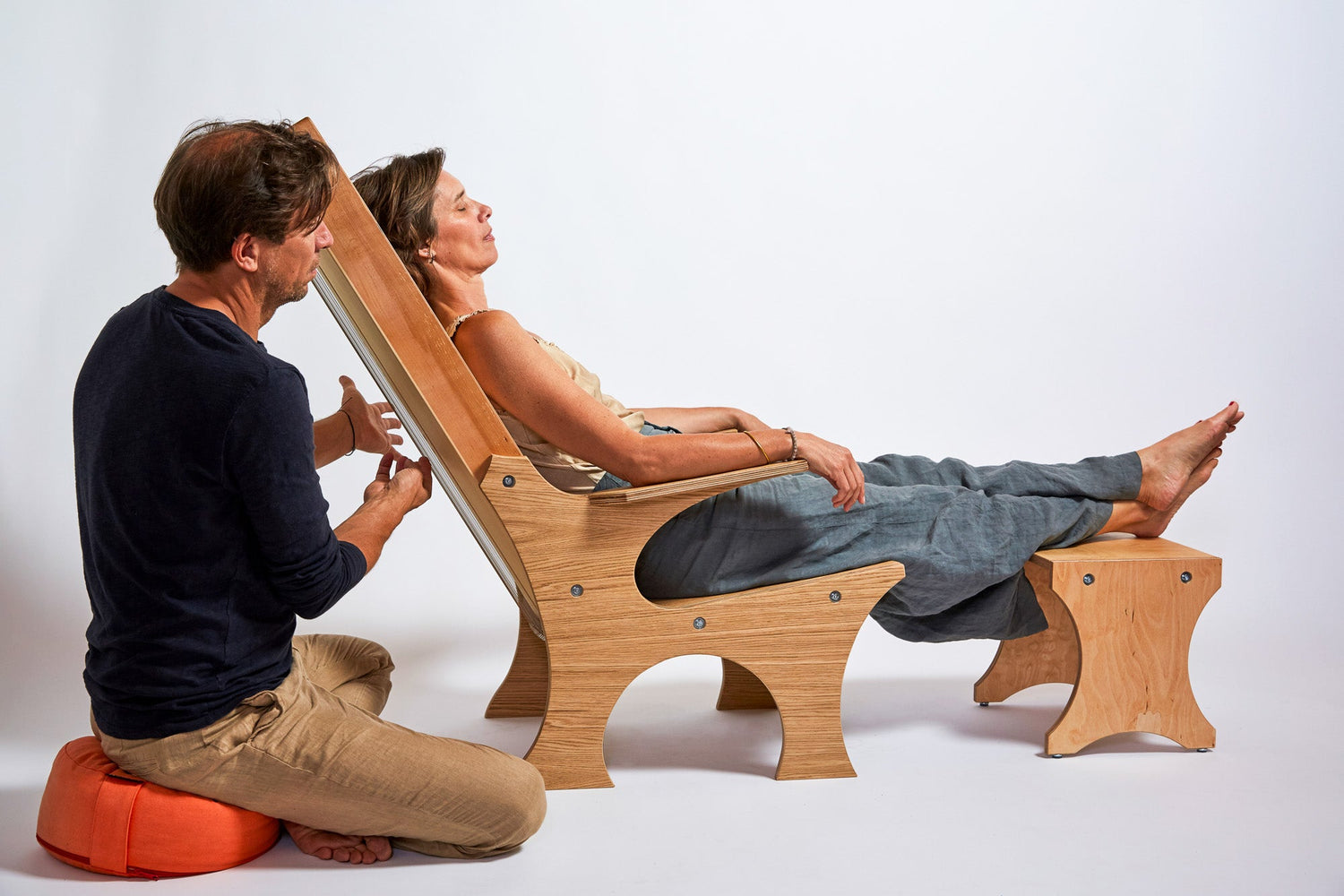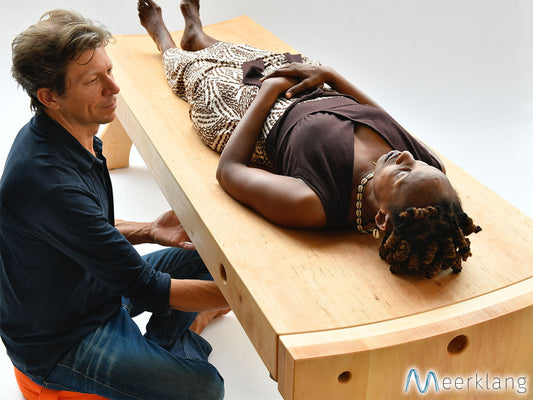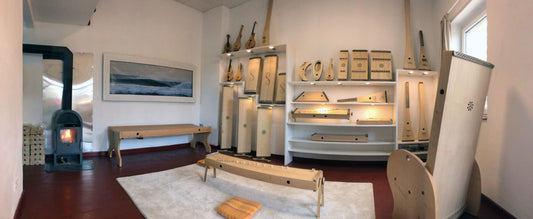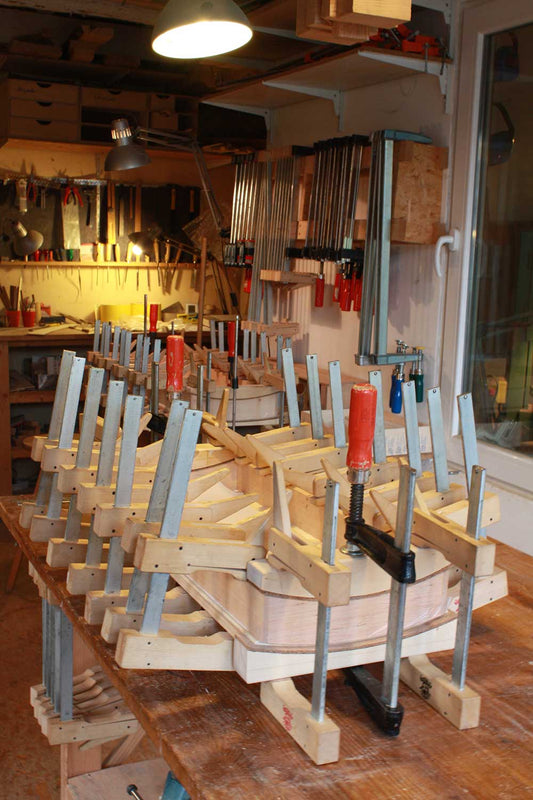FAQ
How can I tune the Meerklang instruments?
The best way to do this is to download a tuning app onto your smartphone (e.g., Soundcorset or Pitched Tuner). Then, turn on the app and pluck a string. The app will recognize the pitch and display the exact pitch.
For example, if you want to tune the note C and the app shows you C# or D, then the note is too high and you need to release some tension with the tuning key (turn counterclockwise). If the app shows you B or A, you need to increase the tension (turn clockwise) until you reach C.
The goal is to get the level exactly in the middle for the sound you want.
For each of our instruments, there is a tuning plan or tuning strip that shows exactly which string should have which note.
Here you can see what the general sequence of notes looks like (from low to high):
C,C#,D,D#,E,F,F#,G,G#,A,A#,H (= B), C…
In addition to the notes, the app also displays the frequency in Hz. This lets you see which octave you're in. The lower the number, the lower the note. Since all instruments are pre-tuned, it's sufficient to concentrate on tuning the respective note (C, D, E, etc.).
Can the Meerklang instruments also be tuned to 432 Hz?
Yes, all instruments can be tuned to 432 Hz. To do so, you would need to set the fundamental frequency in the tuning app to 432 Hz instead of 440 Hz.
How often do I need to tune a Meerklang instrument?
When the instrument is brand new, it tends to go out of tune more often, so it needs to be tuned every two to three days for the first one to two months. Later, the tuning improves, and tuning about every two weeks is usually sufficient.
However, the tuning also depends heavily on whether the climate (especially temperature) remains constant. The greater the fluctuations, the more easily the instrument becomes out of tune.
You also have to expect the instrument to go out of tune during transport.
Is there a warranty on the instruments?
Yes, we offer a 3-year warranty on all instruments. However, damage is so rare that we still offer free repairs later on if the fault is ours.
How often do the instruments need to be restrung?
Basically never. If you give the strings a thorough scrub with steel wool once a year, they'll retain their sound for a very, very long time.
What do I do if a string breaks?
Remove the old string, turn the peg counterclockwise 2-3 times into the wood. Put on the new string (see tutorial) and carefully pull it to the corresponding note.
Where can I get replacement strings?
Best in our shop!
How do I learn to play the Meerklang instruments?
The great thing is that you don't need to take lessons to play our instruments. All of our instruments are very intuitive and easy to play. The more you play, the more you discover the possibilities of each instrument. The monochords are the easiest to play.
The Kotamos and Harmony Tambourines (Hatamo, Hatame, Hatamemo) are a little more challenging, but can also be played effortlessly from the very first moment.
Under the menu item Tutorials you will find some suggestions on how to play and possible variations for all instruments.
Are there bags for the Meerklang instruments?
Yes, you can find the right bag for almost all of our instruments in the Accessories menu.
Which feet do you recommend for the instruments?
If you want to play your instrument on the floor and sit on a blanket or yoga cushion, choose size M. If you want to play the instrument on a table, choose size S. If you want to sit on a chair and have the instrument in front of you, choose size L. If you want to stand at the instrument, choose size XL.
For all Harmony tambourines, we recommend ordering size S while sitting on the floor, as this makes it easier to play with the mallet.
For the Hatamo and Hatamemo variants, we recommend feet M, as this makes it easier to play the monochord on the bottom.
What accessories are included with the instruments?
If you scroll down for the instrument in question, you will find a list of the included accessories.
Do you ship the instruments worldwide?
Yes, when you complete the checkout process, you can see the shipping costs for your location. Shipping costs vary greatly depending on the size of the instrument and the country.
Are the instruments insured during shipping?
Yes, we insure the instruments and take care of any damage. If your shipment arrives damaged, please immediately send us a photo of the box and the damage to the instrument.
Why are shipping costs not included?
Since we ship all instruments worldwide, and shipping costs vary greatly depending on the country, we cannot generally include shipping costs in the basic price of the instruments.
Is there frequent transport damage?
No, this happens very rarely, perhaps in one in a hundred shipments and then only slight scratches or small dents, we will then discuss the procedure (replacement or price reduction) on a case-by-case basis.
How do I care for the surface of the instrument?
All instruments are treated with a robust wood wax oil. You can occasionally remove dust from under the strings and on the body with a dry cotton cloth.
What is the difference between Premium and Standard interface?
The premium finish is oiled three to four times, sanded, and polished. This makes it even more robust, giving it a very smooth surface and a slightly stronger shine. We recommend this treatment to anyone who plans to transport the instrument frequently.
The standard surface is only oiled and polished once, but still has absolutely sufficient, long-lasting protection and a beautiful, smooth surface.
Does the color of the instruments change over time?
Yes, over the years the soundboards darken considerably until they eventually reach the typical warm, honey-golden spruce tone.
What types of wood do you use for the instruments?
For the soundboards, which are the most important component for the sound of the instrument, we use well-seasoned, very fine-grained mountain spruce from Switzerland, from the region where Stradivari once sourced the wood for his violins.
We build the frames of the instruments from local alder. This wood is very light and has a beautiful, warm, reddish tone, which we believe creates a beautiful contrast to the light-colored soundboards.
For the saddles and bridges, we use steamed pear or service tree from the region. This wood is very strong and therefore well-suited for string guidance. It also has a beautiful dark reddish-brown tone that contrasts beautifully with the other woods.
The backs of the instruments are made of birch, alder, maple, or cherry, depending on the instrument and what we have on hand. For flexibility, stability, and lower costs, we also use plywoods such as birch, alder, or maple.
Do you also make custom orders?
Yes, just tell us what you would like to change and we will make you an offer.
Can people visit your workshop and try out the instruments live?
Yes, of course! Please let us know when you'd like to come, and we'll arrange a time.
Why are your instruments also available at Thomann?
Thomann is an important intermediary for us, and we supply them directly. This increases our reach and brings us more orders. Of course, we're happy if you order your instrument directly from us! We'll give you the same price!
Do you also sell to dealers?
If you are a dealer and would like to resell our instruments to your customers, send us an email and we can discuss the terms.
Since when has Meerklang existed?
Meerklang was founded in 2001
How many people work at Meerklang?
At the moment there are six of us






